Lisbon has now become a popular destination in Europe but there are still several hidden gems in Lisbon waiting to be discovered by you

Lisbon is one of the best cities to visit in Europe because it has an amazing blend of historical places , modern trendy spots and great food under usually sunny warm weather to explore. Yet there are several incredible secret spots that very few travellers know about and I will let you know how to discover these hidden gems in Lisbon
THE 15 SECRET SPOTS TO VISIT IN LISBON
The list of the hiddem gems to visit in Lisbon could be actually more, however these are the hidden gems that are most worth discovering in Lisbon:
- WATER AQUEDUCT OF LISBON (Aqueduto das Aguas Livres)
- MARQUESES DA FRONTEIRA PALACE (Palácio dos Marqueses da Fronteira)
- TOREL GARDENS (Jardim do Torel)
- QUELUZ PALACE (Palácio de Queluz)
- ESTRELA CHURCH (Basilica da Estrela)
- ALENTEJO HOUSE (Casa do Alentejo)
- NECESSIDADES PALACE AND GARDENS (Palácio e Jardim das Necessidades)
- MAE D’AGUA WATER RESERVOIR (Reservatório da Mae d’Agua Amoreiras)
- PARQUE DAS NAÇÕES
- SANTA CATARINA VIEWPOINT
- OLDEST LIFT IN LISBON
- YELLOW TRAM SECRET SPOT
- SÃO BENTO & ARROCHELA STREET (TRAVESSA DA ARROCHELA)
- SANTANA STREET (CALÇADA DE SANTANA)
- ALFAMA NARROWEST STREET
So let’s start with the list of these top secret spots in Lisbon ?
WATER AQUEDUCT OF LISBON (AQUEDUTO DAS ÁGUAS LIVRES)
The Lisbon aqueduct, also known as “Águas Livres”, was constructed in the 18th century to provide clean water to the city from the outskirts. It spans over 35 kilometers and includes an impressive arch known as the “Aqueduct of Águas Livres” that can usually be seen from above when landing in Lisbon.
The aqueduct includes a series of arched structures, with the tallest arch reaching a height of over 65 meters and its a Baroque style, characterized by ornate details and grand proportions. Nowadays you can make a self guided tour across the arches , see the old water cistern corridors and enjoy excellent views of Lisbon’s uptown and the red bridge 25 de Abril/ Cristo Rei statue.
The Opening times for the Water Aqueduct of Lisbon are Tuesday to Sunday, 10:00 AM to 5:00 PM, and is closed on Mondays. The entry fee for adults is 5€.





MARQUESES DA FRONTEIRA PALACE
The Marqueses of Fronteira Palace in the Benfica area, Lisbon, has a rich history dating back to the 17th century. Built by the first Marquis of Fronteira, it is renowned for its stunning azulejos (decorative ceramic tiles) and beautiful gardens that resemble a colourful Versailles. The palace has been owned by the Fronteira family for over 300 years and is still a private palace.
I really liked the beautiful quietness of strolling around almost alone in such a beautiful palace with gardens full of statues, fountains, small grotto, white and blue tiles and colorful buildings. The interior can only be visited with a guided tour, but just seeing the outside is already the highlight.
The Marqueses of Fronteira Palace in Lisbon is open to the public from Monday to Friday, from 10:00 AM to 5:00 PM, and on Saturdays from 10:00 AM to 1:00 PM. The entry fee for the palace is €10 for adults.

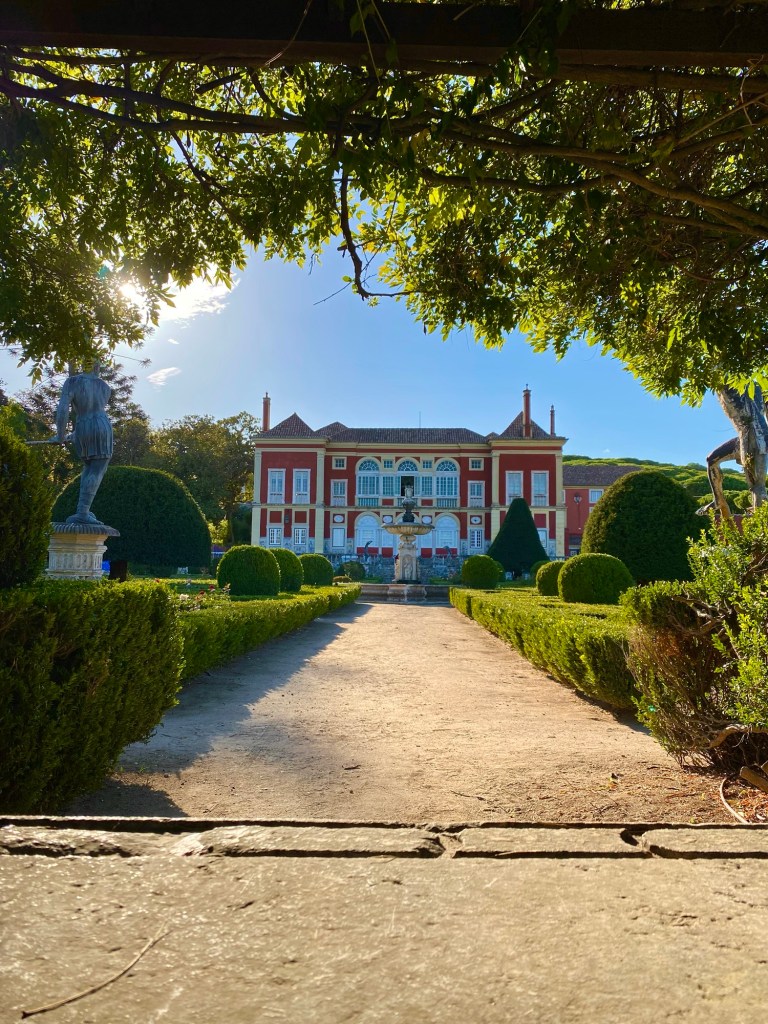



TOREL GARDEN (JARDIM DO TOREL)
Jardim do Torel, situated in the heart of Lisbon, was built on the 19th century as a private garden owned by a wealthy family, but it was later transformed into a public park, providing a peaceful retreat right in the middle of Lisbon downtwon.
Indeed its almost surprising why Jardim do Torel isn’t one of the main Lisbon attraction as it has great panoramic views of Lisbon city, has very well maintained garden flowers and in hot days it even has a large fountain where visitors can plunge in on hot days under the shade.
Also getting to Torel Garden is a great journey as you can catch the Lavra Funicular, a less known one , but also one of the historical funiculars you should experience in Lisbon, unless you prefer to walk up the steep hill.



QUELUZ PALACE (PALÁCIO DE QUELUZ)
Queluz Palace was built in the 18th century as a summer retreat for the King Pedro I. Initially designed in the Baroque style, it later incorporated Rococo elements and has also many beautiful tiles spread across the palace grounds and gardens. The palace is known for its exquisite architecture, beautifully landscaped gardens that resemble Versailles in many places. Not being located in Lisbon city itself, makes it less visited but it’s becoming more popular. Its for me an absolute highlight when visiting Lisbon!
Queluz Palace is open to visitors from Tuesday to Sunday from 10:00 AM to 5:30 PM. The palace is closed on Mondays. The entry fee for adults is €10. Please check for any updated information before planning your visit.
To get to Queluz Palace from Lisbon city center, you can take the train from Lisbon’s Rossio Station directly to Queluz-Belas station, which is a short walk from the palace and its gardens. The journey by train takes approximately 20-25 minutes. Then simply follow the signs to reach the palace.






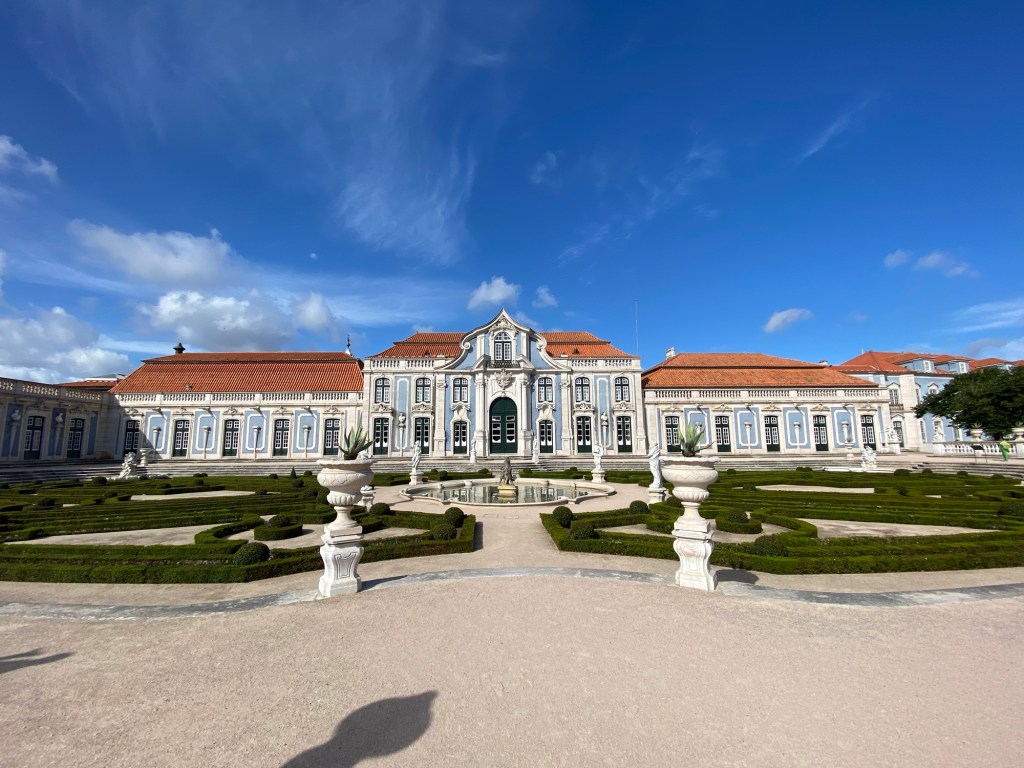
ESTRELA CHURCH (BASILICA DA ESTRELA)
Basilica da Estrela church was commissioned by Queen Maria I in the late 18th century. The basilica was built in the neoclassical style and its construction was completed in 1790. It was initially intended to be a convent, but it became a basilica instead.
The impressive dome and twin bell towers make it a great church to visit in Lisbon, as well as its beautiful interior and the Estrela Garden (Jardim da Estrela), a small oasis in Lisbon uptwon. Also there are some yellow trams that pass right in front of the church and there is a small terminal there too.
Estrela Church is open daily from 08:30 AM to 1:00 PM and from 3:30 PM to 7:00 PM. Entry to the church is free of charge.



ALENTEJO HOUSE (CASA DO ALENTEJO)
Alentejo house was originally built in the 17th century as a palace for the Counts of Alvor. Over time, it underwent various transformations, serving as an aristocratic residence and later as a casino. In the 20th century, it was repurposed into the Casa do Alentejo cultural center, promoting Alentejo’s region culture and traditions through its architecture, events, and traditional cuisine.
Its usually open everyday to enter its extremely beautiful courtyard for free, hat seems like you are entering a luxury arabic house like a riad in Morocco with its moorish details. But to fully admire its beauty and enjoy the Alentejo rich cuisine you should come after 6pm to the restaurant and see the luxurious rooms with its tiles, grand staircase and mirror hall plus the view from the 1st floor.


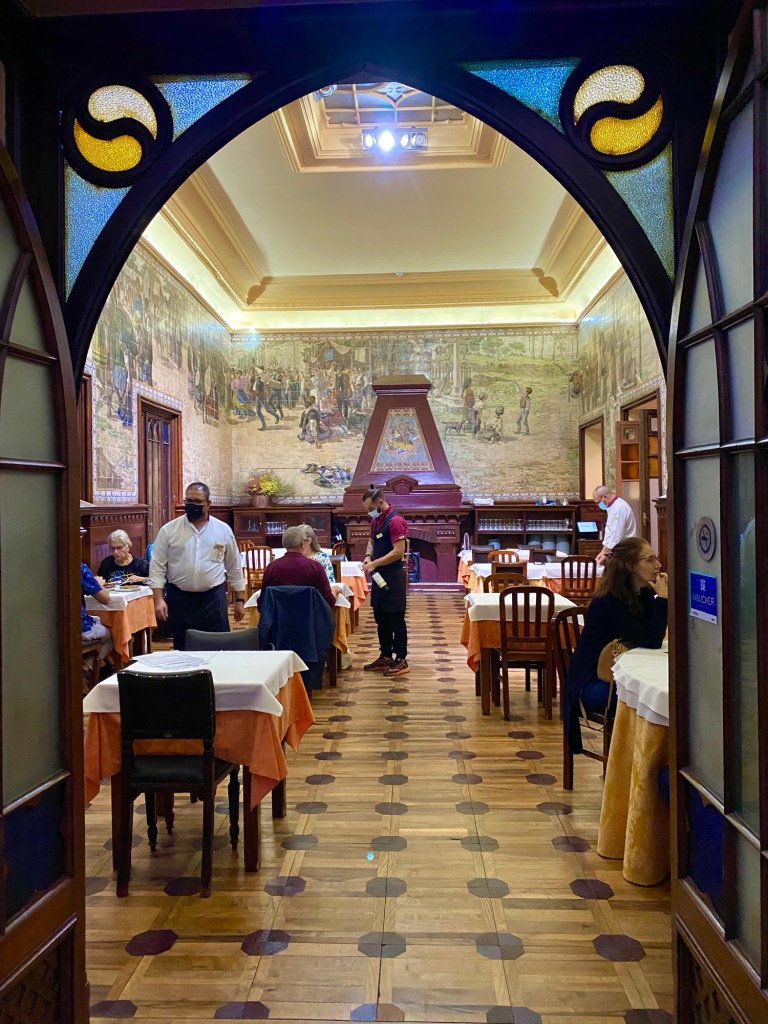


NECESSIDADES PALACE AND GARDENS (JARDIM E PALÁCIO DAS NECESSIDADES)
The Necessidades Palace and Gardens has a rich history dating back to the 18th century. Originally built as a royal family residence, the palace was later transformed into a royal arts school, and eventually became the official residence of the Minister of Foreign Affairs. The magnificent gardens surrounding the palace reflect different historical landscaping styles and feature beautiful fountains and sculptures.
Today, the palace is used for state events and official ceremonies, while the gardens remain open to the public, offering almost secret hideout from the city.
The best parts in the Necessidades garden are for me the old greenhouse ruins, the botanical garden and the incredible views from the red bridge 25 de Abril at the fountain square. The gardens are usually open from dawn until sunset.


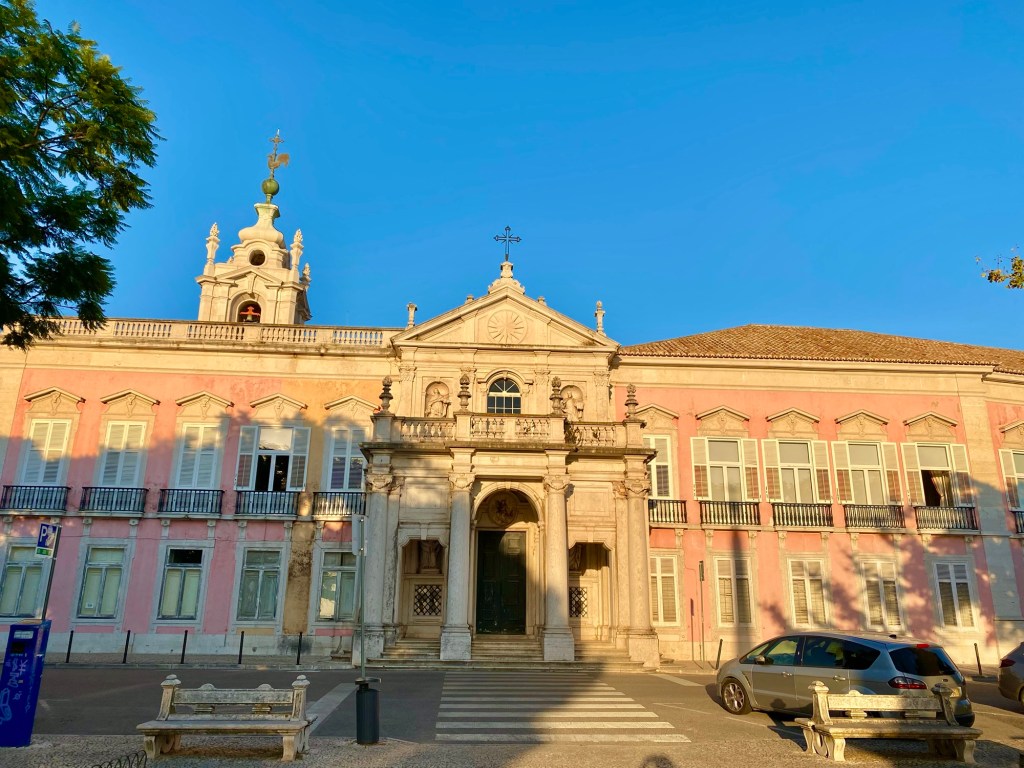


MAE D’AGUA WATER RESERVOIR (RESERVATÓRIO DA MAE D’AGUA)
The Mãe d’Água Water Reservoir, also known as the Amoreiras Reservoir, is a historic water storage built in the 18th century as part of a complex water distribution system designed to supply clean water to the city via the giant water aqueduct that extends for 35km from Lisbon outskirts..
It has not been used for many years and is becoming a bigger tourist attraction in Lisbon thanks to its beautiful main water cistern, the old water tunnely you can see and the lovely views from Lisbon town. Also note that the yellow trams passing by the arch nearby are a stunning postcard picture of Lisbon.
The Mae D’Agua Water Reservoir is usually open from Tuesday to Sunday, from 10:00 AM to 5:00 PM. It is closed on Mondays. The entry fee for adults is 5€.


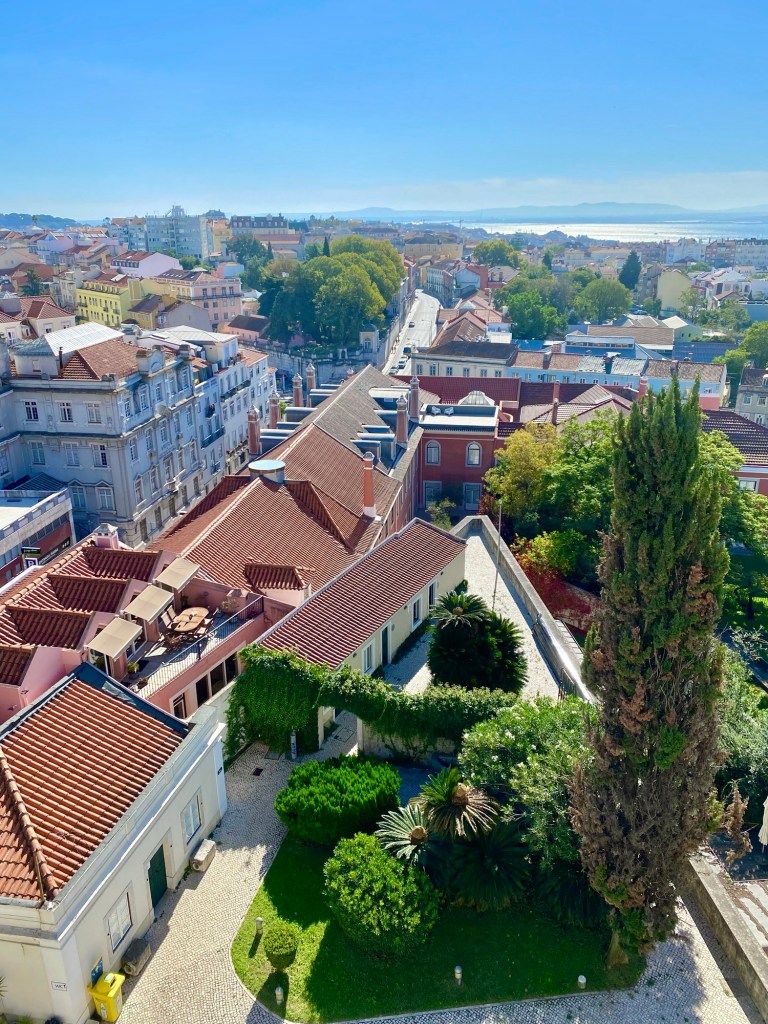



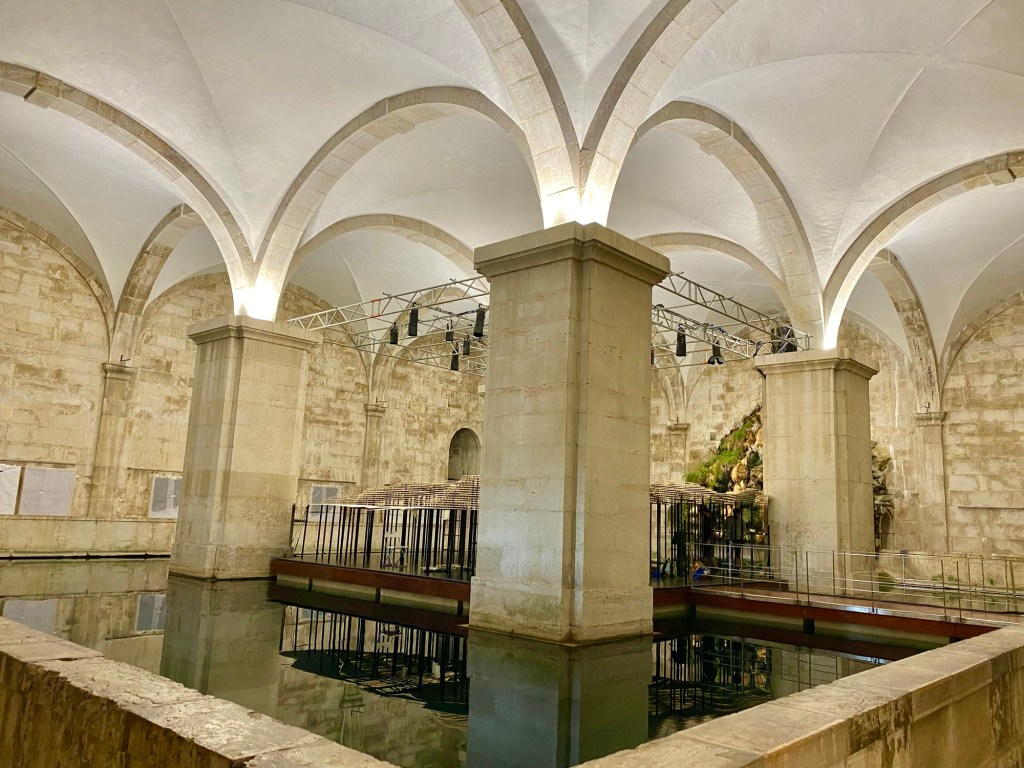
PARQUE DAS NAÇÕES
Parque das Nações, meaning Park of the Nations, is a modern district in Lisbon developed for the 1998 World Exposition – Expo ’98. This ambitious project transformed an abandoned industrial area into a vibrant waterfront district.
The main highlights are the Vasco da Gama Tower. the futuristic-looking MEO Arena, the Oceanário de Lisboa, one of the largest aquariums in the world. Then you have a scenic promenade along the Tagus River, a cable car ride with panoramic views, a diverse range of dining options, and hosting various events, concerts, and exhibitions at the waterfront plus the large Vasco da Gama shopping mall. Watch out for the “water volcanoes” fountains!

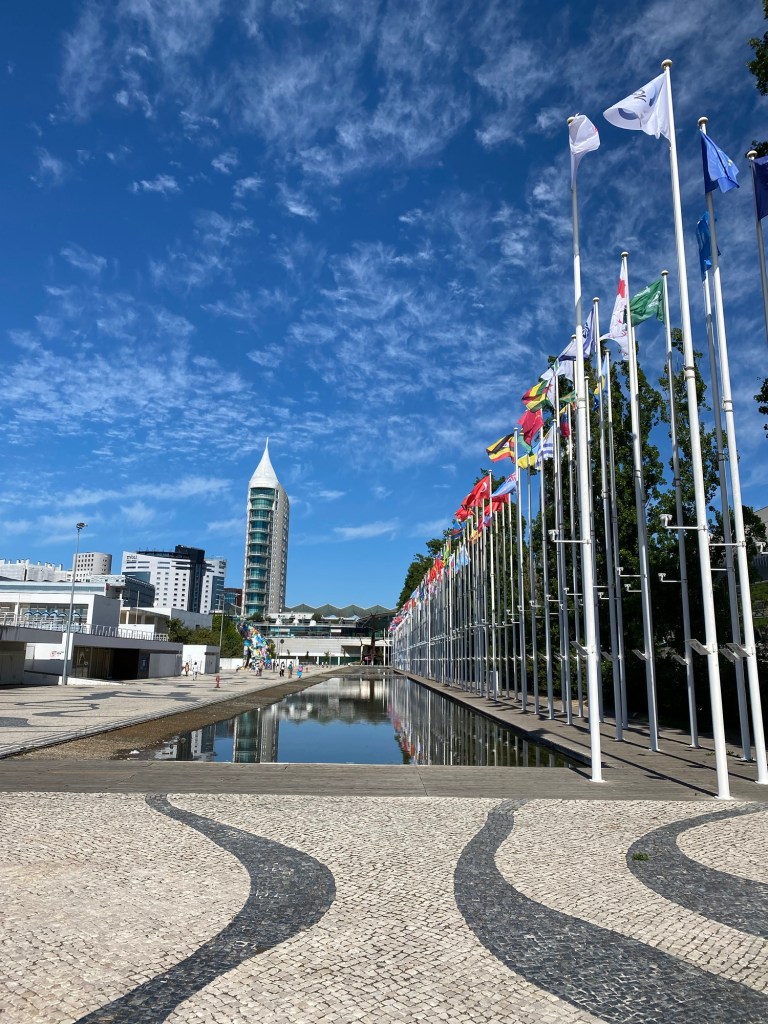
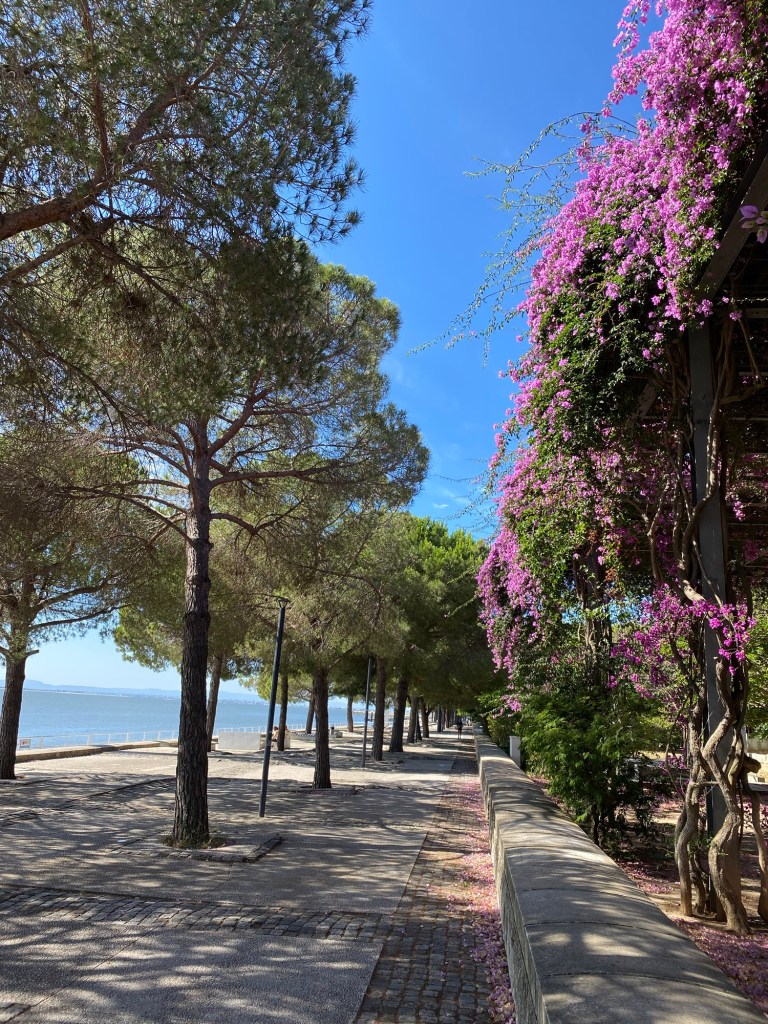


SANTA CATARINA VIEWPOINT
The Santa Catarina Viewpoint offers a breathtaking panoramic view of Lisbon. Located in the historic Santa Catarina neighborhood, not far from Bica funicular street , this “miradouro” is often ignored despite the great views and the lovely cafés that are located around it.



OLDEST LIFT IN LISBON
A more than one century old lift hidden in Lisbon downtown is probably the most incredible hidden gem that most visitors don’t see even if thousands pass nearby everyday in Chiado busy area.
The reason is that its inside a Benetton store, on the last floor, as it isn’t working anymore but is like looking into an ancient era of how lifts were not just meant to be functional they had to be elegant and luxurious. So even if you don’t shop anything , you can for free to the top floor of this old palace on Chiado’s main street and literally look yourself in the mirror of a lift.

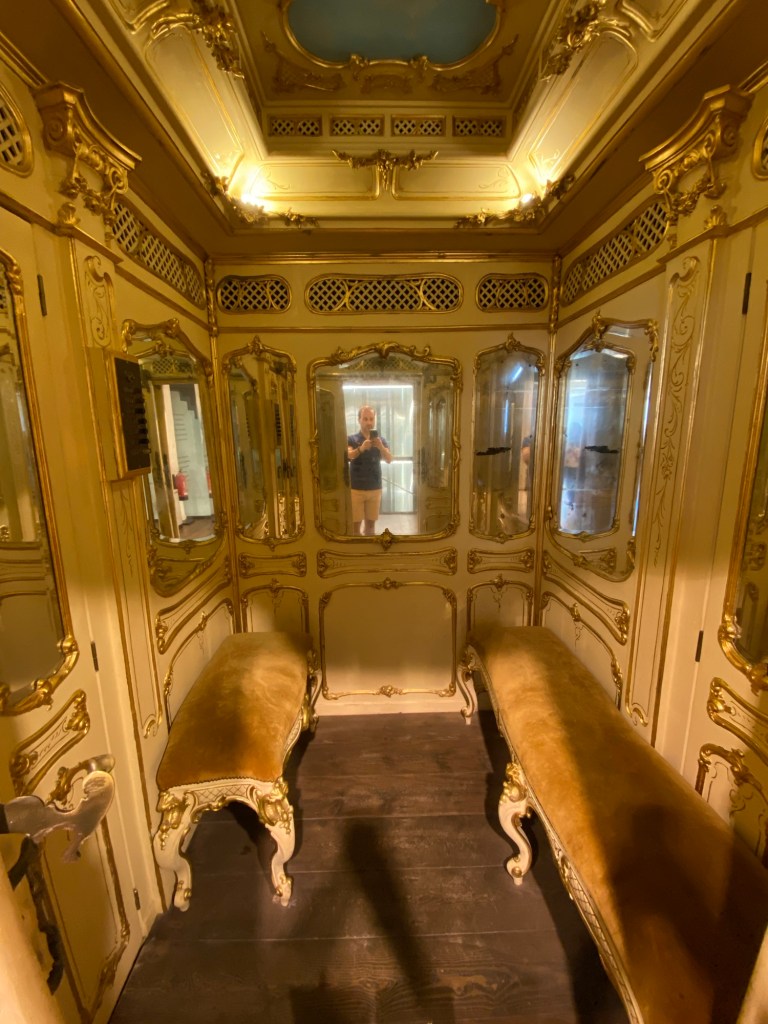

YELLOW TRAM SECRET VIEW SPOT
At the Chiado district area, there is a corner spot that offers a stunning postcard of the yellow tram of Lisbon winding up / down a curvy street, whilst getting the orange roofs of Lisbon and Sao Jorge castle plus Praca do Comercio square.
You just need to go to Largo da Academia Nacional das Belas Artes and climb to the small staircase so that you can get the special pictures below- they are really worth the 5 minutes walk from Chiado main street.



SÃO BENTO & ARROCHELA STREET (TRAVESSA DA ARROCHELA)
Sao Bento is where the Portuguese national parliament is located so definitely worth a look to its impressive neoclassical building that stands for the long hard fought democracy in Portugal since 1974 as the revolution overthrew the right wing dictatorship.
However the most beautiful view of the national parliament building comes actually when you climb a small street behind called Travessa da Arrochela street all the way up to its beginning for a stunning shot of one the most beautiful colorful streets in Lisbon. Sao Bento will be right at the end as the secret building to be revealed from this incredible spot.



SANTANA STREET (CALÇADA DE SANTANA)
Calcada de Santana is one of the most wonderful typical Lisbon street lined with colourful buildings with many traditional tiles on its fronts, balconies with flowers and clothes hanging on a cobbled street.
Located on the city center of Lisbon, quite near to Torel Garden, Santana Street is one of those secret places that you will only see in Lisbon that will make that special postcard picture.


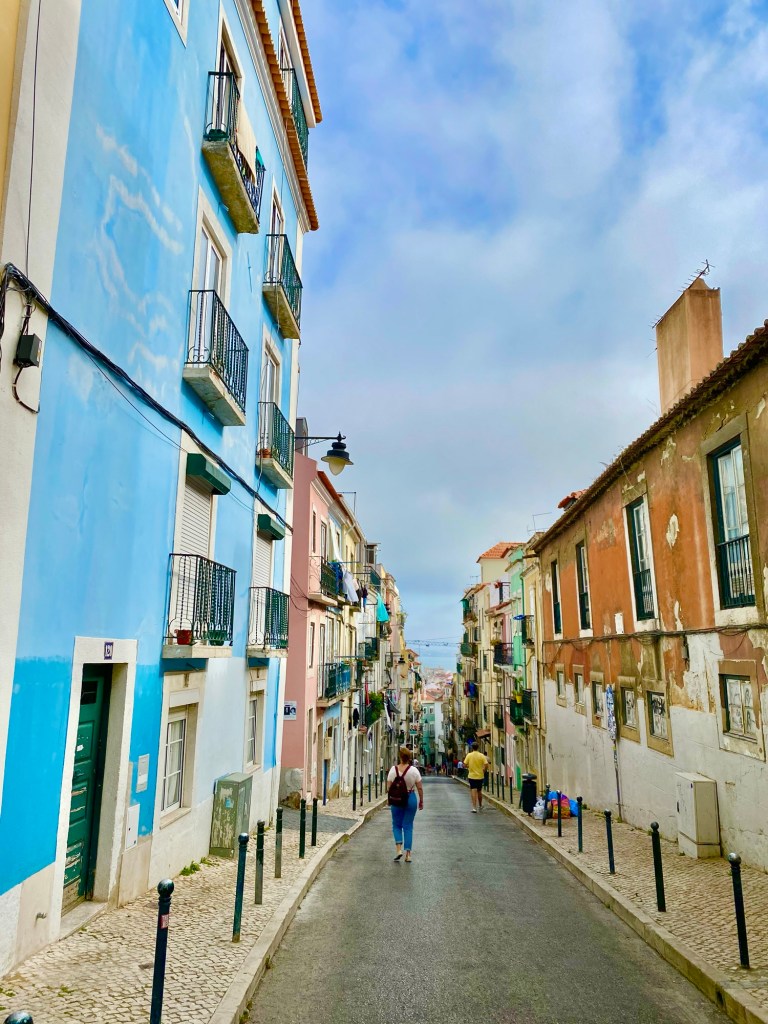
ALFAMA NARROWEST STREET
Alfama is the hear of Lisbon old town, full of lovely streets, narrow alleys, courtyards and beautiful traditional buildings . But I especially like this narrow street that you might pass on your way up to Lisbon Castle or to Graca viewpoint & church.
Its a colorful staircase that will lead you to one of the most beautiful narrow streets of Lisbon, for me a hidden gem that is worth taking a great picture. The name of this secret place is the Beco dos Loios . What do you think?



Have a look to my other Lisbon travel posts and more great destinations around the World ! If you have any questions, do let me know! Enjoy Lisbon!
TOP 21 THINGS TO DO IN LISBON FOR YOU TO EXPLORE PORTUGAL’S CAPITAL
Know the best places to visit in Lisbon, a top things to do in Lisbon including travel tips for each one of the best spots to visit and a quick travel guide about the top attractions in Lisbon
A FREE TRAVEL GUIDE TO VISIT LISBON IN PORTUGAL
Plan your trip to Lisbon with these travel tips on when to go, how to get to Lisbon and move around, where to stay and the best restaurants to eat plus the best rooftop locations
THE BEST 2-DAY ITINERARY TO SPEND AN AMAZING WEEKEND IN TALLINN
See by yourself why is Tallinn one of the most attractive and charming cities in Europe and how to visit the best attractions in a 2 to 3 days itinerary

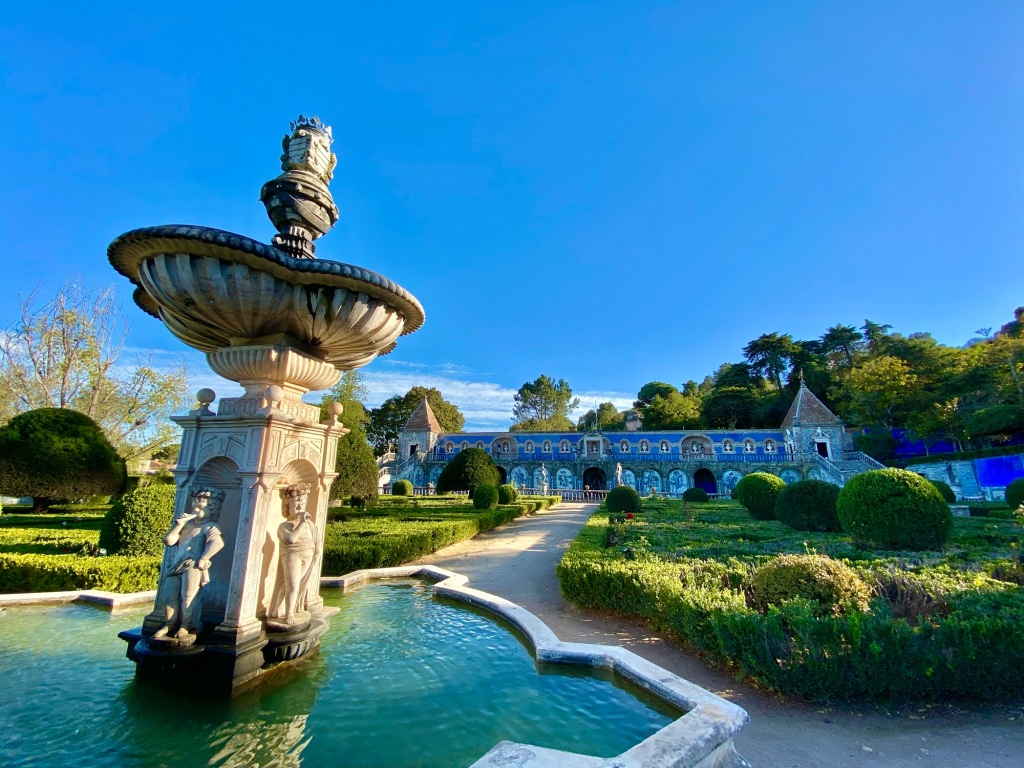



Leave a comment